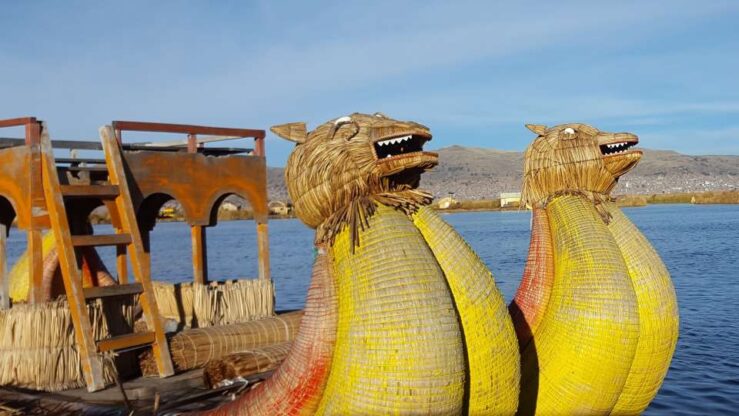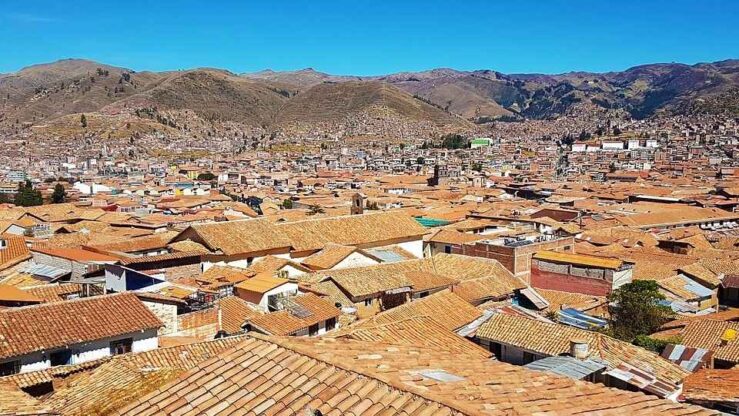Hanga Roa – The Rapa Nui People, Easter Island
1. Polynesian Easter Island & Rapa Nui people
2. Hanga Roa
3. Tahai ceremonial complex
4. Rapa Nui language
5. Stay with local Rapa Nui family
6. Hanga Roa – small-scale town
Flying in from Santiago de Chile after a 5-hour flight is an awe-inspiring experience. After 3,700 km (2,300 miles) over the deep and vast South Pacific Ocean without the slightest sight of land, it is announced through the speaker that we will land in barely ten minutes.
From the window we see the contours of a tiny island approaching. We finally go down and arrive at the renowned Easter Island. I have known about it since I was a child, when the isolated island and its fascinating statues were brought to my knowledge through a Donald Duck comic strip. Ever since, I have always dreamt of seeing the island for myself.
As Europeans it is one of the furthest destinations in the world we could reach. It has not until recently occurred to us that we would really come here. However, planning a longer South America trip, we seized the opportunity to visit the remote, unique island. If not now, it might never be…
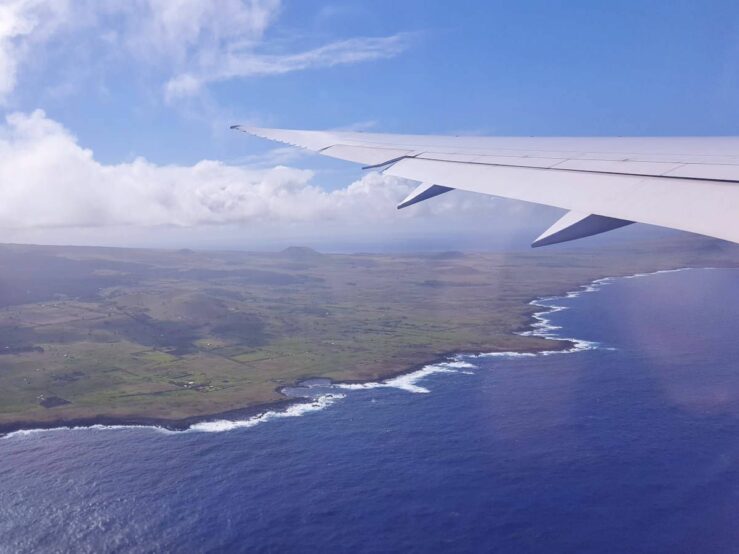
We are flying over Easter Island | Photo: Travel In Culture
So here we are, more than ready to visit the Rapa Nui culture and people on Easter Island!
The volcanic island is one of the remotest inhabited islands in the world. This faraway, Polynesian island is located in the South Pacific Ocean, west of the Chilean coast, at the southeasternmost vertex of the Polynesian Triangle with Hawaii and New Zealand, respectively, as the two other vertices. It was annexed to Chile in 1888, and is now governed as an integral part of Chile.
The Polynesians named the island Rapa Nui. It was discovered by the outside world on Easter Sunday in 1722 – from where it has got its recent name Easter Island or Isla de Pascua in Spanish.
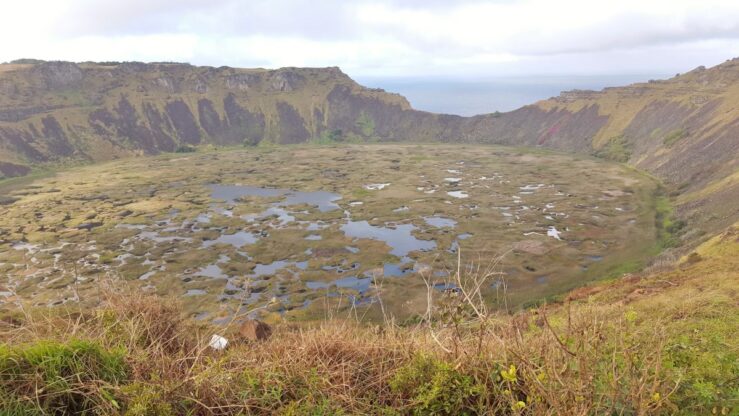
Photo: Travel In Culture
It is believed that Polynesian people settled on the island around 1200 AD – or maybe even before. They created an extraordinary, thriving culture with gigantic, volcanic moai statues placed on elevated platforms, facing inwards with their back towards the sea. The statues represented the spirits of their ancestors.
Rapa Nui is not very large. From the air we see than the runway stretches all across from one side to the other in the southern part of the island. Actually, NASA has extended the runway to serve as an emergency landing field for space shuttle missions!
We have been lucky enough to find accommodation with the most awesome Rapa Nui hosts, a couple renting out half of their private house in Hanga Roa, the island capital. Our hosts’ daughter receives us in Hanga Roa Airport, the Mataveri International Airport, in their SUV. They rent out half of their private house, Cabaña Tongariki. We squeeze ourselves together in the car so that we can all be there. She eagerly explains that she will take us for a short sightseeing tour in Hanga Roa on the way back to their house.
Indeed, we have come to Polynesia – visitors to the island are received with Polynesian flower necklaces at the airport! Before leaving, she double-checks that we have already paid the fee of 80$ per person for the entrance to the Rapa Nui National Park which is the entrance ticket to all the cultural sites outside Hanga Roa. It is only for sale at the airport and in one other location in town. We will need to show the ticket to prove that we have paid the fee at many of the important sites around the island, so it would be annoying to find out later that we missed it.
Road safety Chile/your country
McMeal price Chile/your country
Crime rate Chile/your country
Her improvised sightseeing service is an unexpected surprise. We pass by the main sights in town and our female driver explains about the shops and points out the local grocery store. We could have bought and brought our own groceries from Santiago. Many travellers do that before boarding the plane to Easter Island, since food is terribly expensive on the island. You are allowed to take a box of groceries with you on the flight. We just simply hadn’t got time for that in Santiago. And maybe we don’t either really believe that food can be THAT expensive here…
The young lady suggests an order we should do the moai sites in when touring the island the next day, so that we will both beat the tourist groups and benefit from the right moments during the day.

Photo: Travel In Culture
Taking us to the Rapa Nui moai masterpieces north of the Hanga Roa harbour, she willingly explains about the huge statues. She clarifies the mystery around the missing eyes of nearly all the moai on the island. We get a brief explanation of how the eyes were only carved and added in the very last phase when the statue was already in its final location. This means that moai, that never reached their final location, never got eyes. Besides, the statues once with eyes, all lost them during the following centuries.
Here, within walking distance from Hanga Roa, she shows us the Tahai ceremonial complex comprising three ahus which are platforms with moai. The Ahu Ko Te Riko moai is the only statue on the island, that today can be seen with restored coral eyes, symbol of spiritual power. It is also one of the three moai on the island that still wear their pukao, their red hat, and according to her this is an excellent example of the numerous sculptures created by the Rapa Nui people of the moai carving era.
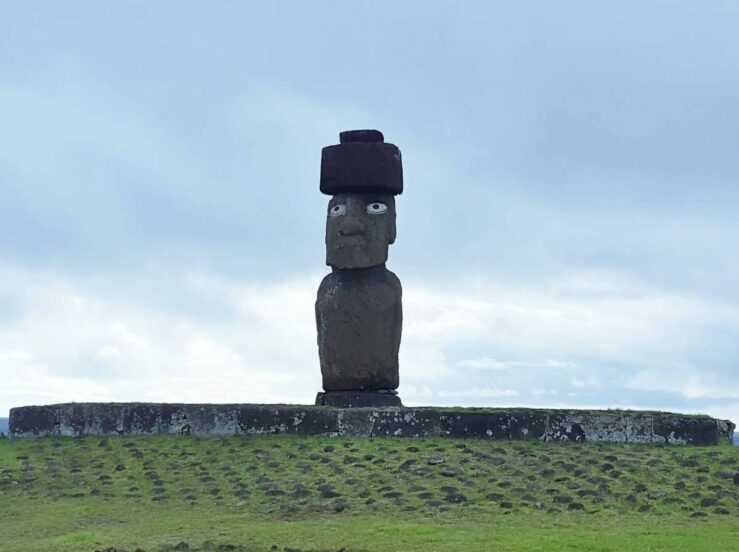
The Tahai ceremonial complex with the Ahu Ko Te Riko moai in Hanga Roa | Photo: Travel In Culture
On the improvised tour she explains about her Rapa Nui people, their culture and language. She gives examples of her parents’ names: the Spanish version, the Rapa Nui version… as well as their nicknames! I find it a bit astonishing that they translate their names, but it seems all natural to her.
The native population on Easter Island today is bilingual, speaking both Rapa Nui and Spanish. Spanish is used for communicating with visitors and mainland Chile, whereas Rapa Nui remains the colloquial island language used in the families. The Polynesian language is spoken by the roughly 3,500 remaining Rapa Nui inhabitants (out of an estimated 17,500 inhabitants at the peak of the Rapa Nui culture).

Photo: Travel In Culture
The Rapa Nui language has been kept as a unique language because of the remote location of the island without communication to the outside world for hundreds of years. The characteristics of the language are the limited number of sounds due to the presence of only ten consonants and five vowels. Some of the languages today being closest to Rapa Nui are Tahitian and Marquesan as well as, maybe surprisingly, the New Zealand Maori language. This has contributed to theories that the first seafarers to arrive on the island may have been the same people that reached New Zealand.
Just before arriving at their house, the daughter repeats that her parents don’t speak English, but only Spanish, in addition to the Rapa Nui language.
We finally drive up a volcanic dirt road which leads to her parents’ house. It is on the outskirts of Hanga Roa with fields or grass areas bordering some of the roads. When arriving we are astonished to see beautiful banana palms with huge, greenish bananas on them, just in front of the house. The island features a subtropical climate with warm and humid summers and mild winters which are perfect conditions for the palm trees.
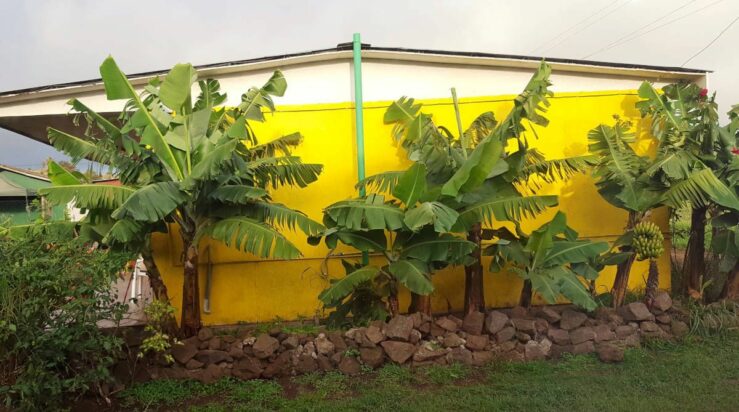
Awesome banana palms outside our cabaña | Photo: Travel In Culture
Her mother receives us, welcoming us in Spanish. She explains about the house and shows us the part of the house they live in. In fact, their family has four houses at this same road. The name of theis house is Cabaña Tongariki, named after the impressive ahu platform with the 15 moai statues: Ahu Tongariki.
Planning to drive around on the island the next day, we ask about the possibility of renting a car. Our hosts offer that we can rent one of their SUVs which is way cheaper than the car rentals at Hanga Roa’s main street. Awesome – we have no second thoughts and agree that we can take the car in the morning.
Since tourism is the major industry on Easter Island, many people rent out their houses or part of their houses to the visitors. So when looking for a Hanga Roa hotel, it is definitely a plus if you can get in touch with people here who offer private accommodation such as a Rapa Nui cabaña. The advantage of staying privately with a family is that you see the island from another angle, and it is in general more affordable than many of the traditional hotels.
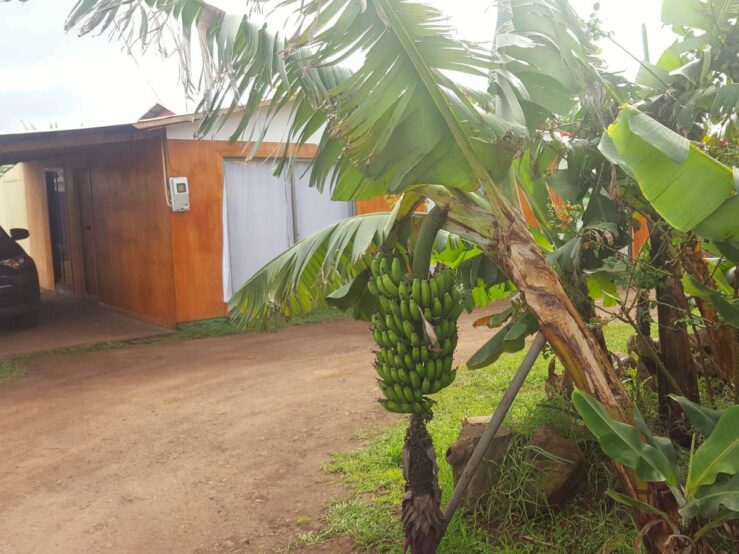
In our cabaña we stay with great Rapa Nui people living on Easter Island | Photo: Travel In Culture
Shortly after arriving we instinctively find our shorts at the bottom of our rucksacks. They have been packed away while we were in the Andes Mountains where there was even snow! Now, we definitely need them again. It is now about 20 degrees centigrade – a pleasant climate change.

Photo: Travel In Culture
Hanga Roa main street is not the most typical town street. It is village-like with scattered houses, green areas and palm trees as well as dirt paths in between the houses.
We have heard that the price level on Easter Island is sky-high – and have thought that maybe it is a bit exaggerated. However, when entering the local grocery store, we now realise that food indeed is terribly expensive. Nearly everything is flown in from mainland Chile – and the prices reflect this. Only the few things grown on the island are supposed to be more reasonably priced. We cannot help being a bit shocked that 3 avocados (admitted: they are very big) cost us over 12 USD! And 6 bananas go for more than 6 USD! Anyway, when eating out oven empanadas are both a tasty and a budget-friendly option! They go for as little as 5 USD in some places!
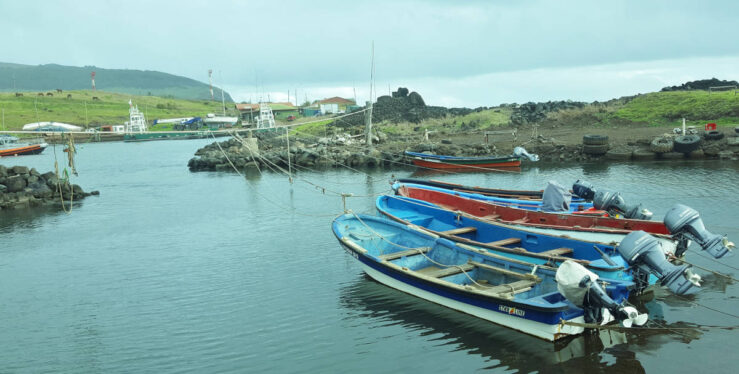
Photo: Travel In Culture
The harbour is tiny and really picturesque with its few colourful boats moored. July is off season and it is stunningly quiet there when we arrive.
In the southern part of Hanga Roa, on a green area atop the rocks, we spot the first horses. The island is known for its numerous horses – probably around 6000 (wild) horses. The number is larger than the number of Rapa Nui people on Easter Island! Since people – both Rapa Nui and visitors – are concentrated in Hanga Roa, the island offers excellent conditions for undisturbed wildlife wherever you go outside Hanga Roa. This of course also means that you need to watch out for horses on the roads when touring the island!
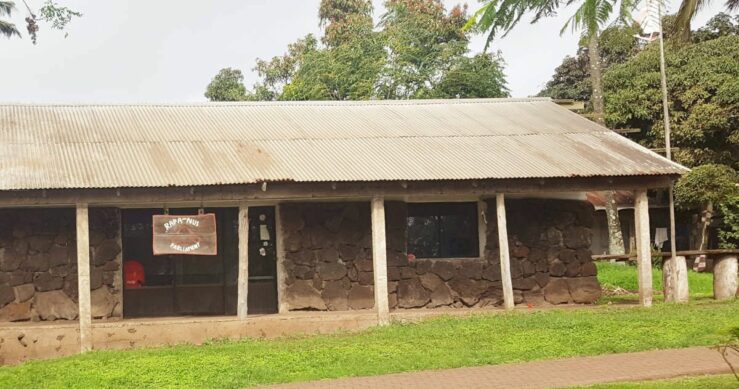
The Rapa Nui Parliament | Photo: Travel In Culture
Everything on the island is very small-scale compared to most other places. Anyway, when we suddenly find ourselves in front of the Rapa Nui Parliament we need to look twice to understand that this really is the parliament of the people on Easter Island (?!?). It is a spartan-looking, rural building with a tin roof – nothing sophisticated at all!
We have paid attention to the direction we took when leaving the cabaña since we don’t want to get lost on the dirt roads! Our road is named ‘Make-Make’ after the deity and creator of humanity and all things: the Make-Make god who is also the warrior as well as fertility god in the Rapa Nui mythology.
Our great hosts receive us outside the cabaña when we come back from our walk, letting us know that they are just on the other side of the wall in the house if we have any questions or need anything!
Read next: Take in Ahu Tongariki and Chill out on Anakena Beach and Colonial Style in Colonia del Sacramento, Uruguay
Find useful travel gear: Travel Essentials and see How to Travel Light
Travel Insurance / Visa
Have you considered what you will do in the (unlikely) event of something unforeseen happening? Do you need a travel insurance? Check here if you need a travel insurance for your trip – and check here if you need a visa for your trip and apply for it!
‘Hanga Roa – The Rapa Nui People, Easter Island’
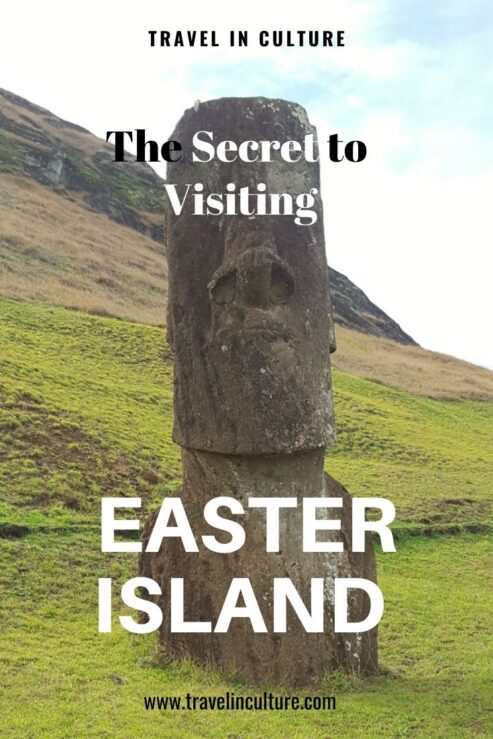
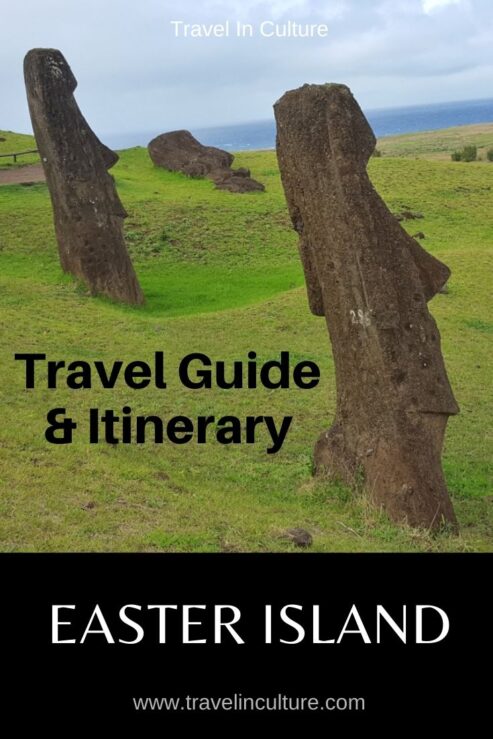
Featured image of
Hanga Roa – The Rapa Nui People, Easter Island:
Travel In Culture




